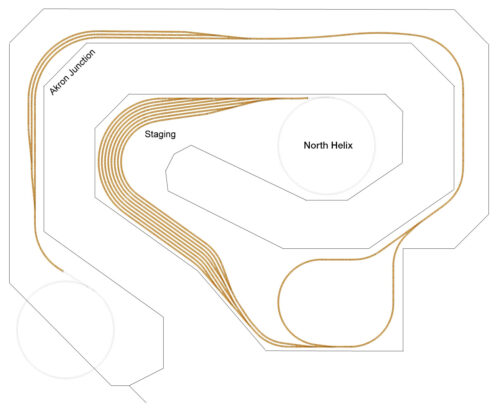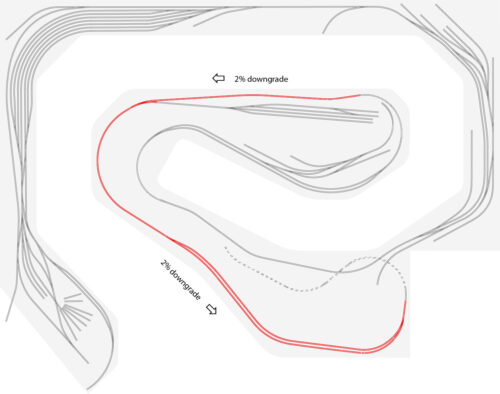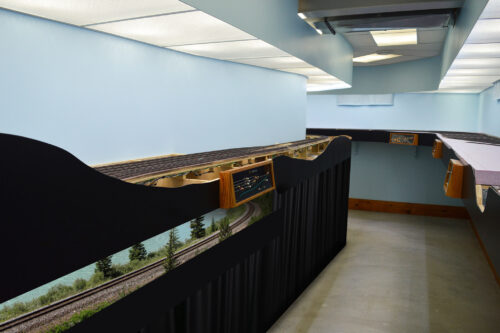Big changes are afoot on the LK&O!
The railroad, as originally designed, was physically a double deck arrangement however it was functionally a single deck railroad with the lower deck being strictly utilitarian, i.e. staging, reverse loop, and a continuous running connection. There was to be no scenery and no operations on the lower deck. It was entirely “backstage” most of which would be hidden behind a curtain.
Daydreaming
For the past several years I have entertained the idea of making the lower deck fully operational just like the upper deck. I have found that I really enjoy the length of run on the railroad. The thought of nearly doubling that length is too alluring to resist. Until now it has been nothing more than thinking about it. The recent completion of the south helix meant it was time to make a decision. I’ve made my choice. I’m going for it!
Here is the work-in-progress track plan I have so far. The grid pattern is the upper deck benchwork for reference.
Staging
Staging is changed from its original double ended configuration to a stub end arrangement. The ability to dispatch trains both east and west is preserved by a wye onto the lower deck. Staging capacity, for all practical purposes, is the same. The reversing loop was eliminated.
From helix to nolix
Replacing the north helix is the continuation of the existing grade that starts on the upper deck near Mittiki Mine and proceeds through Kitzmiller.
At Kitzmiller the track enters a mountain and snakes its way along and through the backdrop as hidden track until it emerges on the lower deck just below the mine. The hidden track is 1.8% grade.
Since originating on the upper deck at an elevation of 53″, the track has dropped to an elevation of 41″ by the time it appears on the lower deck under the mine. Minus the upper fascia height this results in a viewport height of only 7″ so the benchwork will be narrow at 8″, track will be at the front, and the photo backdrop will do the heavy lifting to create a sense of depth. My mind’s eye sees the scene looking something like this:
The 1.8% grade continues round the bend (under Lapeer) and the benchwork gets a little deeper at 12″ as the viewport grows taller. The grade continues to the staging wye track where it finally reaches the standard lower deck elevation of 32-1/2″. Nolix replaces helix.
Additional switching
In addition to the little one car spot at Chuch’s Coal, the new lower deck created space for several additional large industries to serve – Babcock & Wilcox boiler works, Ideal Bakery, 3M Roofing Granules, and Columbian Chemicals. My cardboard lower benchwork section mock up (sorry, forgot to photograph) showed 16″ was about the right depth for the benchwork. This works out great because the backdrops will hide the upper benchwork wall brackets.
Time to make sawdust
So there is my big news. I’m off to the lumber yard tomorrow.





